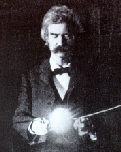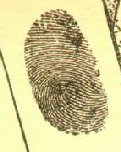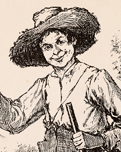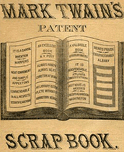About 10 years after finishing Huck Finn MT
decided to go back again imaginatively to the world of his
childhood. The story he wound up writing, about a slave
mother who tries to free her infant son by switching him with
her master's baby, makes Pudd'nhead Wilson MT's most
sustained engagement with the institution of slavery. What
it's saying about slavery, however, is by no means clear. As
published, his story was illustrated in an unusual way, with
hundreds of pen-and-ink "marginal illustrations" by F. M.
Senior and C. H. Warren. Their images of slaves are as
ambiguous as MT's text, ranging from sentimental to realistic
to minstrel grotesque. The 18 examples of their work
below are chosen to represent this range. The overall
effect of using "marginal illustrations," though, is to keep
the reader at a great distance from the narrative, to turn
the characters into cartoons, and, since shading is
impossible, to eliminate any kind of grey area between
"black" and "white." (You can see all the illustrations in
the DIGITAL FACSIMILE of the First edition in the
PUDD'NHEAD WILSON section of the archive. When the novel
appeared serially in The Century, it was illustrated
by one of the magazine's staff artists, Louis Loeb, whose
drawings, including 3 of slaves, can be seen on the ILLUSTRATING
PUDD'NHEAD page; there you can also see the 7 new
illustrations that E. W. Kemble drew for a late 1890s edition
-- slaves appear in 5 of those.)
|
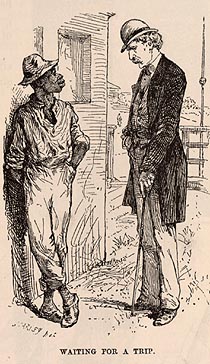
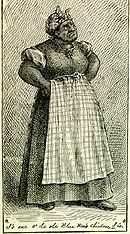








![[THE STRANGLING HERO]](tsslav3t.jpg)






















































































































